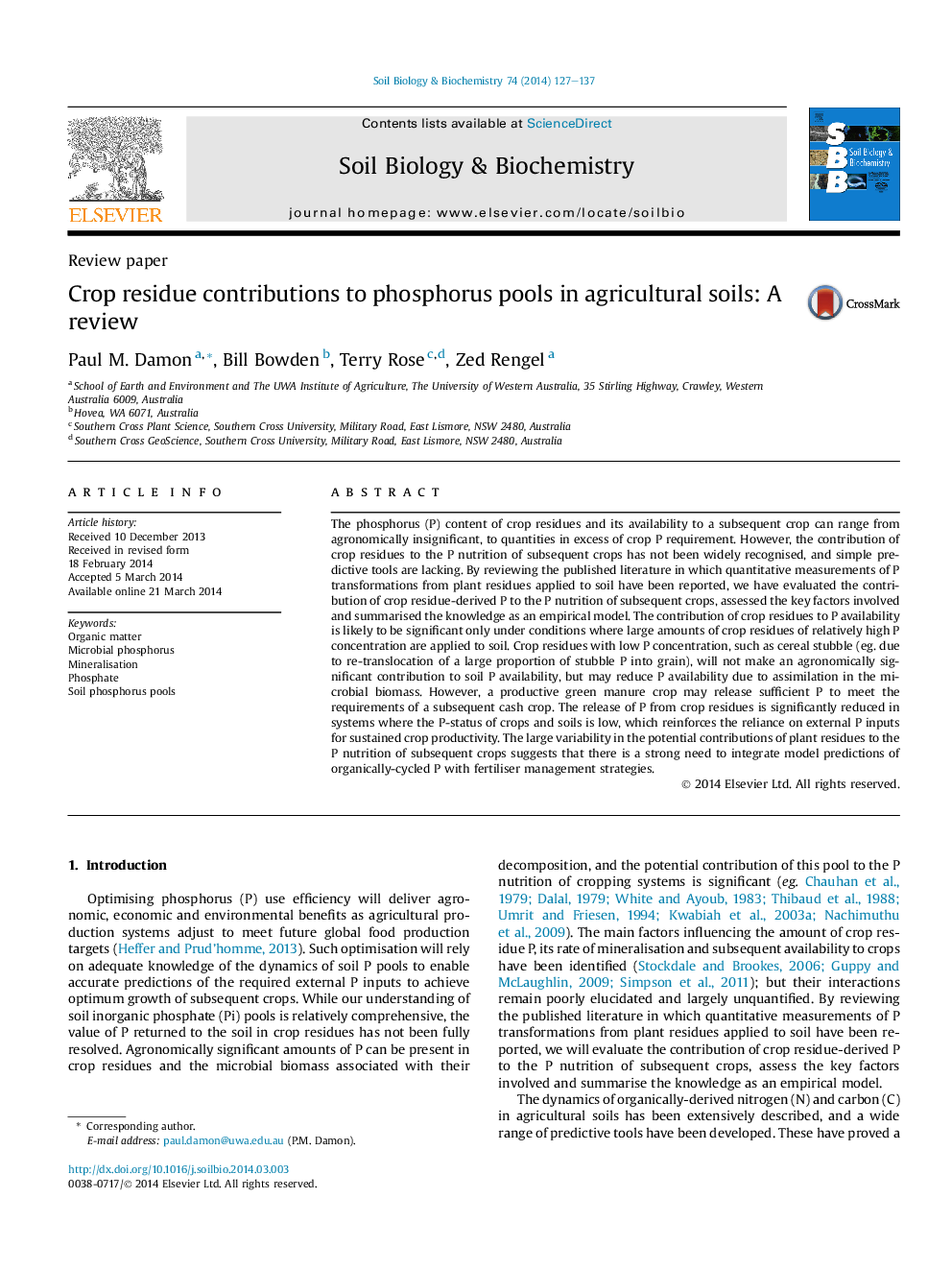| Article ID | Journal | Published Year | Pages | File Type |
|---|---|---|---|---|
| 2024620 | Soil Biology and Biochemistry | 2014 | 11 Pages |
•A review of published literature in which quantitative measurements are reported.•Quantitative evaluation of crop residue-derived P in subsequent crops; key mechanisms assessed.•The knowledge is summarised as an empirical model.•The agronomic implications of estimating organically cycled P are discussed.
The phosphorus (P) content of crop residues and its availability to a subsequent crop can range from agronomically insignificant, to quantities in excess of crop P requirement. However, the contribution of crop residues to the P nutrition of subsequent crops has not been widely recognised, and simple predictive tools are lacking. By reviewing the published literature in which quantitative measurements of P transformations from plant residues applied to soil have been reported, we have evaluated the contribution of crop residue-derived P to the P nutrition of subsequent crops, assessed the key factors involved and summarised the knowledge as an empirical model. The contribution of crop residues to P availability is likely to be significant only under conditions where large amounts of crop residues of relatively high P concentration are applied to soil. Crop residues with low P concentration, such as cereal stubble (eg. due to re-translocation of a large proportion of stubble P into grain), will not make an agronomically significant contribution to soil P availability, but may reduce P availability due to assimilation in the microbial biomass. However, a productive green manure crop may release sufficient P to meet the requirements of a subsequent cash crop. The release of P from crop residues is significantly reduced in systems where the P-status of crops and soils is low, which reinforces the reliance on external P inputs for sustained crop productivity. The large variability in the potential contributions of plant residues to the P nutrition of subsequent crops suggests that there is a strong need to integrate model predictions of organically-cycled P with fertiliser management strategies.
